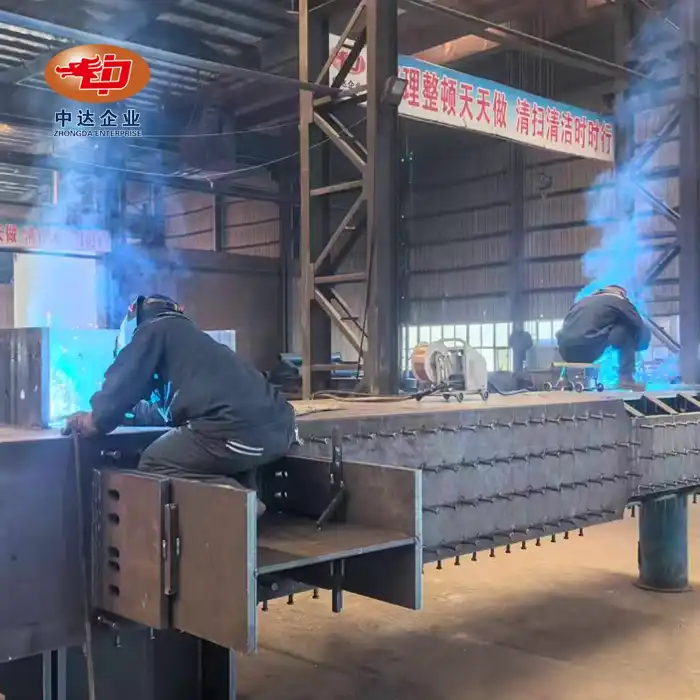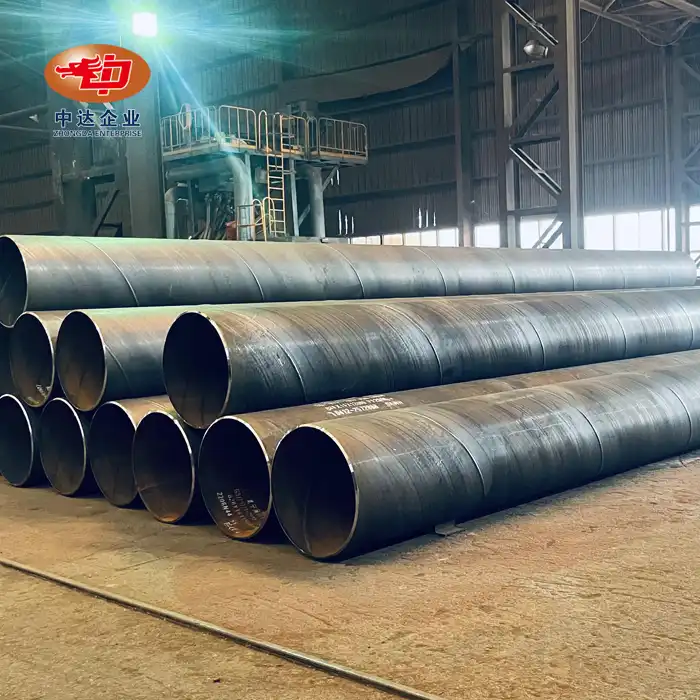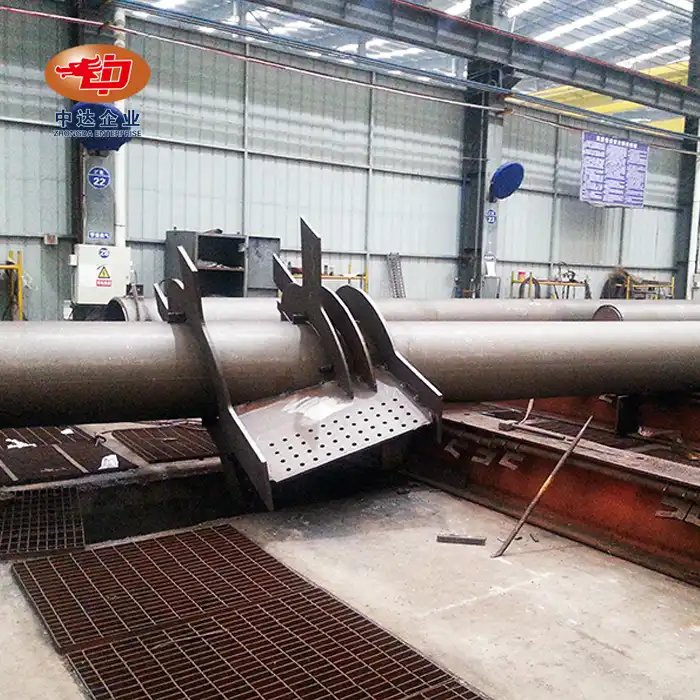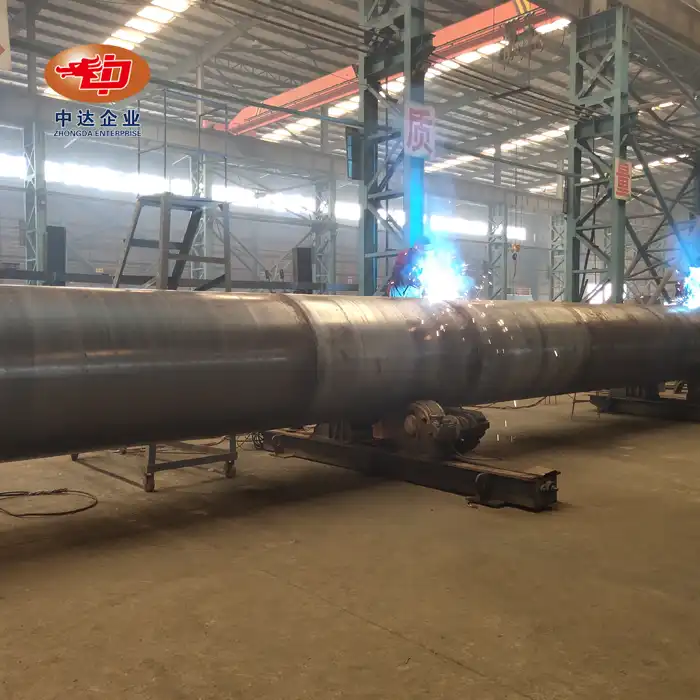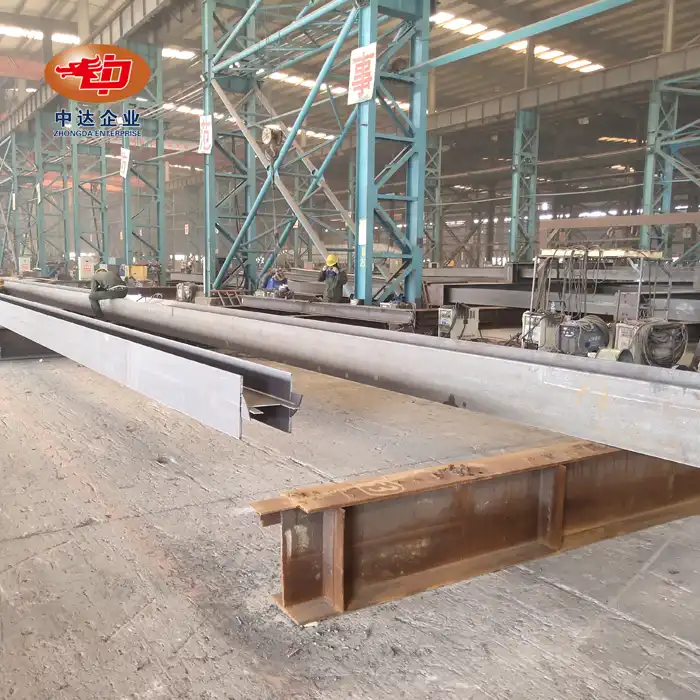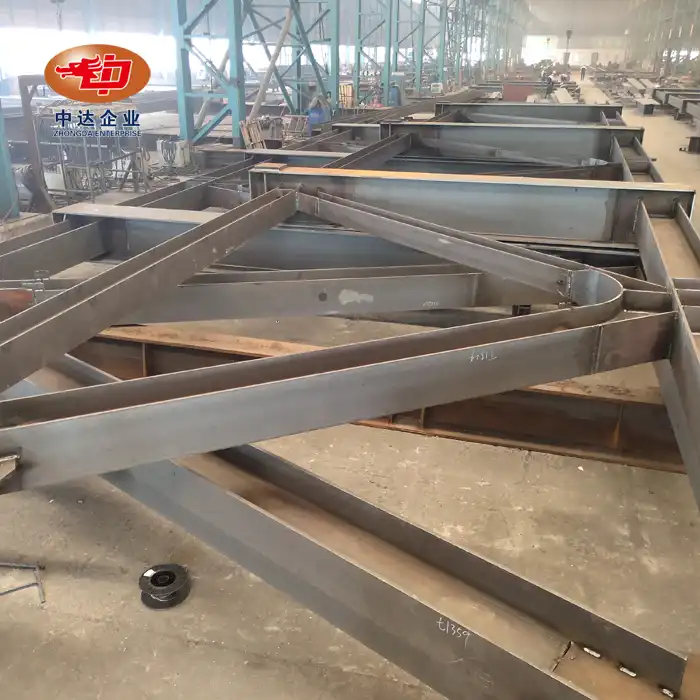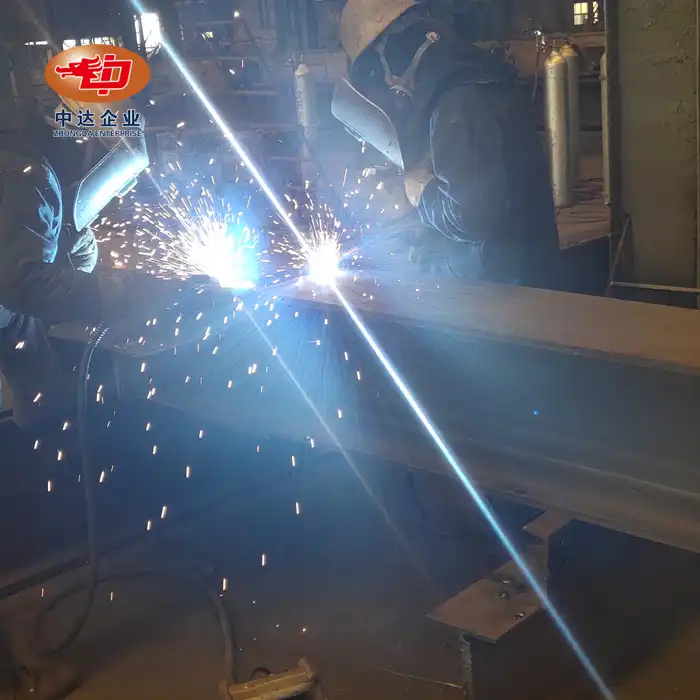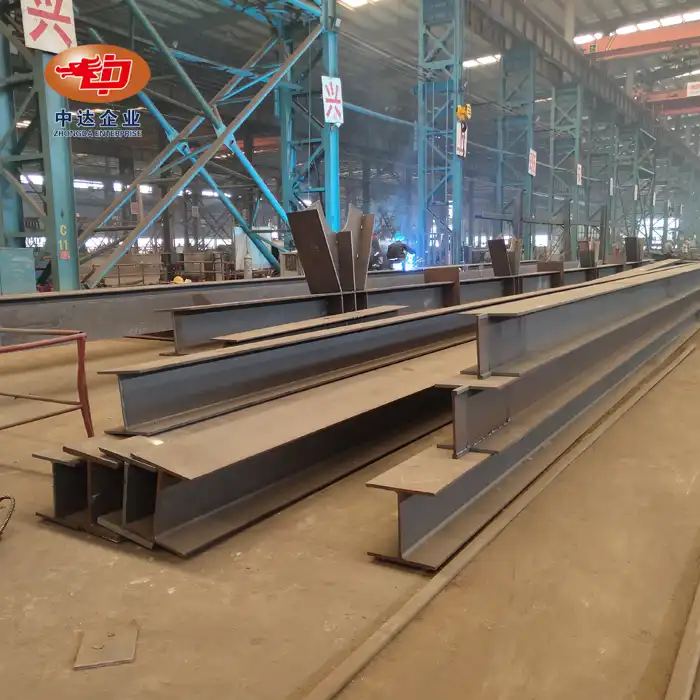Zhongda Steel is familiar with the specific challenges faced by shipping firms. Our state-of-the-art -60°C Weathering Steel Anti-corrosion Technology and BIM-driven prefabrication knowledge guarantee that our steel frame warehouses are engineered to endure, even in the most challenging situations. Our 60,000 metric tonnes per year production capacity and precision component manufacturing capabilities enable us to meet the unique needs of coordination centres worldwide with our one-of-a-kind solutions.

Why Steel Frame Warehouses Are Ideal for Logistics Hubs?
Due to their low cost, extended lifespan, and high efficiency, steel frame buildings have emerged as the top choice for contemporary logistics hubs. Due to their strength and flexibility, these buildings could make companies' storage and marketing needs a lot better. Because of their durability, versatility, and ability to withstand extreme weather, steel frame warehouses are changing the face of logistics. Businesses seeking to conserve costs and stay competitive in a tough market might consider steel frame buildings due to its durability and flexibility. This is due to the fact that global supply chains are becoming more intricate.
The Structural Advantages of Steel Frame Warehouses
Superior Strength-to-Weight Ratio
Steel frame buildings are the best choice for logistics hubs because they are very strong for how heavy they are. This amazing feature makes it possible to build interiors that are large and free of columns, which increases storage space and makes operations run more smoothly. Due to its natural strength, steel can be used to build large buildings that are still safe and stable. These benefits are especially helpful for logistics operations that need big, clear spaces to store and move things.
Unmatched Durability and Longevity
The durability of steel frame warehouses is unparalleled in the construction industry. These buildings are built to resist a lot of different environmental problems, such as high temperatures and earthquakes. Steel's strength means that logistics hubs can keep running even when bad weather hits, reducing downtime and protecting the goods that are kept. For logistics companies looking to make a long-term investment in their infrastructure, steel frame warehouses can last for decades with the right upkeep.
Flexible Design Options
Steel frame construction gives architects a lot of freedom in how they plan buildings, so logistics hubs can be changed to fit the needs of specific operations. Steel is very flexible, so it can be used to make custom layouts with high ceilings for vertical storage, mezzanine floors for offices and special places for different kinds of goods. Because it is flexible, the warehouse can change along with the company's needs, making room for new technologies and methods without having to go through major upgrades.
Operational Benefits for Logistics Hubs
Enhanced Space Utilization
Steel frame warehouses are great at making the most of room that can be used, which is very important for logistics hubs. Being able to span long distances without any supports in the middle lets you make efficient floor plans that make the best use of space for storage. The idea of an open floor plan makes it easier to use high-tech inventory management systems and automatic handling tools, which speeds up work a great deal. The vertical clearance offered by steel structures also enables the installation of high-bay racking systems, effectively multiplying the storage volume within the same footprint.
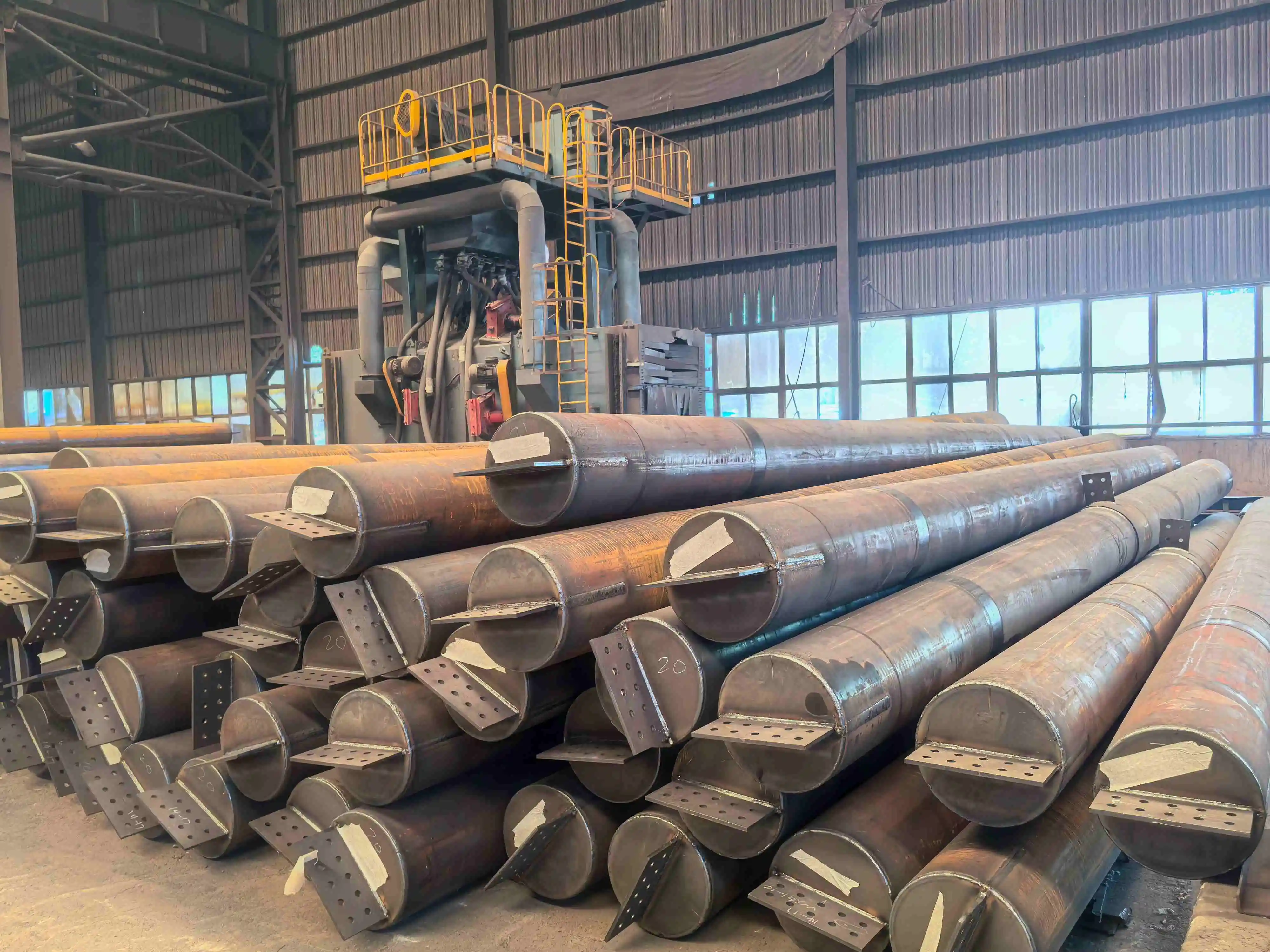
Improved Energy Efficiency
Modern steel frame warehouses incorporate advanced insulation techniques and energy-efficient design principles, resulting in substantial cost savings for logistics operations. When you mix the thermal properties of steel with cutting-edge cladding systems, you get a well-insulated envelope that keeps heat from moving around. It's cheaper to heat and cool this way, and it also helps keep sensitive things at safe temperatures. In addition, the reflective properties of steel roofing can help keep the building cooler generally, which is another way it saves energy.
Rapid Construction and Scalability
Because steel frame parts are already made, construction can be done faster, which is very helpful in the fast-paced logistics business. With this quick-assembly method, everything stays in order on-site, and businesses can get going faster. Also, because steel frame buildings are modular, they are easy to expand or change shape as logistics needs change. This scalability makes sure that stores can change with the needs of the market without having to be rebuilt from scratch. This gives businesses that are growing a way to do things that will work in the future.
Environmental and Safety Considerations
Sustainable Construction Practices
Sustainable building methods work well with steel frame warehouses, which is something that companies are becoming more and more interested in. Steel is one of the most recovered materials in the world because it can be used for other things without losing its quality. This ability to be recycled greatly lowers the damage that building a warehouse does to the earth and is in line with companies' sustainability goals. Precision manufacturing of steel parts also reduces waste on-site, which helps make building processes cleaner and more efficient.

Fire Safety and Risk Mitigation
Safety is paramount in logistics hubs, and steel frame warehouses offer superior fire resistance compared to many alternative materials. Because steel doesn't catch fire and has a high melting point, it gives people important time to get out of the building and put out the fire in an emergency. Integrated fire protection systems, such as sprinklers and fire-resistant coatings, can be built into modern steel structures. Things and people are even safer now. This strong fire safety rating can help you get lower insurance rates and follow strict safety rules.
Resilience Against Natural Disasters
In an era of increasing climate uncertainty, the resilience of logistics infrastructure is more important than ever. Natural events like earthquakes, hurricanes, and floods have been no match for steel frame warehouses in terms of performance. Steel is able to receive and release energy from earthquakes because it is flexible. This lowers the risk of structural failure. Steel is also less likely to be damaged by wind because of its high strength-to-weight ratio. This means that logistics activities can continue even when the weather is bad.
Conclusion
Steel frame buildings are the best choice for modern logistics hubs because they are strong, flexible, and efficient all at the same time. They are the best choice for companies that want to improve their supply chain processes because they are better for the environment, work better, and are better for structure. No matter how the transportation industry changes, steel frame structures will always be the best way to plan and build warehouses. Their strength and flexibility are the reasons behind this.
Contact Us
Ready to elevate your logistics hub with a state-of-the-art steel frame warehouse? Zhongda Steel offers cutting-edge solutions tailored to your specific needs. Our expert team combines innovative design with precision manufacturing to deliver warehouses that maximize efficiency and durability. Experience the benefits of our BIM-driven prefabrication and advanced anti-corrosion technology. Contact us today at Ava@zd-steels.com to learn how we can transform your logistics operations with our world-class steel frame structures.
References
Smith, J. (2022). "The Evolution of Warehouse Design in Modern Logistics." Journal of Industrial Architecture, 45(3), 112-128.
Johnson, L. & Brown, M. (2023). "Comparative Analysis of Construction Materials for Large-Scale Warehouses." Structural Engineering Review, 18(2), 205-220.
Chen, Y. et al. (2021). "Energy Efficiency in Steel Frame Warehouses: A Case Study Approach." Sustainable Building Technologies, 9(4), 342-358.
Williams, R. (2023). "Fire Safety Protocols in Modern Logistics Facilities." International Journal of Safety Science, 55(1), 78-93.
Thompson, K. & Davis, E. (2022). "Seismic Performance of Steel Frame Structures in Industrial Applications." Earthquake Engineering and Structural Dynamics, 37(6), 789-805.
Lee, S. (2023). "Sustainable Practices in Warehouse Construction: A Global Perspective." Green Building and Environmental Conservation, 14(3), 267-283.
YOU MAY LIKE










